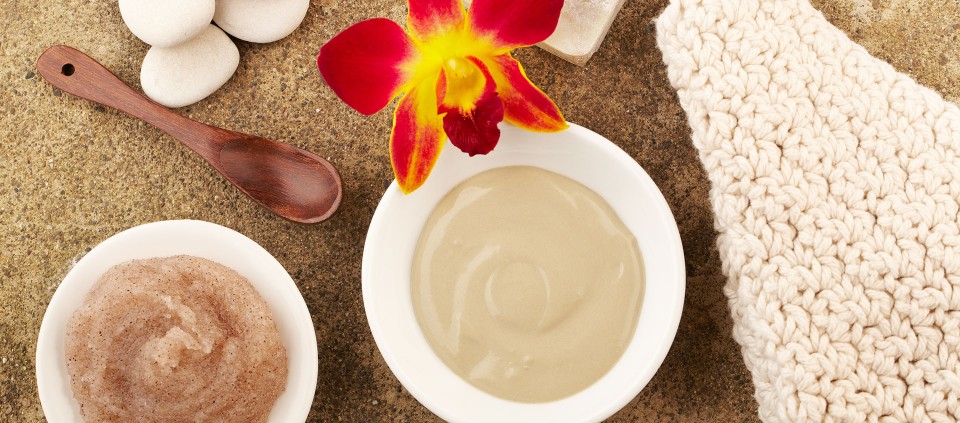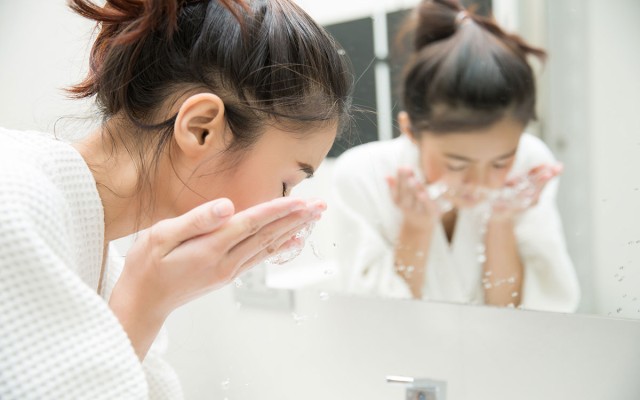Skin Care Tips for Summer

Our skin plays a vital role in regulating body temperature, protects us from heat and light, and serves as a shield from disease, infection, and injury. Unfortunately, many of us assault our skin with harsh chemical products or unsafe practices that can cause serious damage and lead to cancers or premature aging. From dry skin and premature wrinkles to uneven pigmentation and skin cancer, sun damage is a danger that just a little preparation can prevent.
During summer’s long, hot days, special care and attention are needed to keep the body’s largest organ protected and in good health.
Exfoliation
Beautiful skin is healthy skin, and healthy skin requires good care. One of the best ways to get glowing summer skin is to exfoliate. Aim for gentle and natural exfoliation as harsh chemical exfoliants can cause the melanocytes (the cells that provide pigment to the skin) to become deformed, resulting in irregularities in skin color.
Sugar scrubs, almond cleansers, powdered rice, and oat bran are gentle enough for sensitive skin and exfoliating enough to wash away dirt and other impurities. These products can be used on a washcloth to exfoliate the entire body. Or, for a full-body exfoliation without the mess, try a silk garshana glove (used to exfoliate the body during Ayurvedic treatments), a loofa, or a dry skin brush.
Moisturizing
After exfoliating, moisturizing to hydrate dry, thirsty skin is the key to keeping it healthy and protected. Salt, sand, and sweat after a day at the beach, for example, can leave the skin dry and stripped of its natural protection, leaving it vulnerable to the sun’s ultraviolet rays and other sources of oxidation, such as chemical pollutants. Temperature swings and cold, dry air from air conditioners can also contribute to the need for daytime moisturizing.
Plant-based moisturizers, derived from either medicinal plants or plant oils, moisturize and heal the skin, offering it protection from summer stress. Look for products with natural ingredients, such as rose hip, avocado, carrot seed, calendula, wheat germ, and sesame and sunflower oil for the most deeply moisturizing and protective benefits.
Nighttime Skin Care
At night, the skin’s function is to restore, renew, and replace cells and tissues. As an organ, the skin breathes through its pores and releases waste products from the restoration process back onto the surface of the skin. If you use a moisturizer or heavy oils at night, the skin won’t breathe or eliminate effectively, which can result in blackheads and blemishes. So, cleansing your face in the evening is enough. For greater healing, you can add a plant toner made from aloe vera, lavender, rose, or chamomile to strengthen the skin, promote elasticity, and tighten pores.
Sun and Skin
Sunshine restores our spirits, recharges our energy, and fosters the formation of essential vitamin D. However, too much sun can have serious consequences—there are 1.3 million cases of skin cancer diagnosed annually in the United States, resulting in around 7,800 deaths due to melanoma. While there may be debate about the safety and effectiveness of sunscreens, there is no dispute over the importance of protection from overexposure to the sun’s UV rays (which can also increase your risk of developing eye problems, such as cataracts and photokeratitis, a painful but reversible sunburn of the cornea).
To help protect the skin from sun damage, minimize sun exposure during the prime time for UV exposure (10:00 am–3:00 pm)—even on cloudy days! Whenever possible, wear sunglasses with UV protection and a wide-brimmed hat to protect your eyes. Tightly knit fabrics, such as unbleached cotton, silk, or polyester can also provide UV protection. Consider creating an on-the-go skin-care kit and keep a hat, sunglasses, mineral sunblock, and a long-sleeved cover-up in the car. When out walking or hiking, aim for lightweight long-sleeved shirts, and pants. At the beach, try airy cover-ups, such as sarongs or caftans. When picnicking or playing outside, seek out shade under trees, umbrellas, outdoor gazebos, or garden tents.
Certain medications can increase photosensitivity—and the chances of getting burned. Medications containing photoreactive agents include over-the-counter antihistamines, nonsteroidal anti-inflammatory drugs, antibiotics, some antidepressants, anti-psychotics, cancer chemotherapy, cardiovascular drugs, diuretics, and oral diabetes medications. The herbal remedy St. John’s wort has also been linked with photosensitivity. Check with your pharmacist about potential photosensitivity issues for any medications you may be taking.
Mineral Sunblocks
Mineral sunblocks, such as zinc oxide and titanium dioxide, sit on the skin and deflect harmful rays. While in their pure forms, they can be heavier and chalkier than chemical sunscreens, organic skin-care manufacturers like Dr. Hauschka, Alba Botanicals, Weleda, and others, have blended the mineral pigments with fortifying plant proteins and pure essential oils to lighten the formula, providing a moisture-rich, safe, and protective lotion.
It’s no coincidence that the areas most missed when applying sunscreen are also the areas where skin cancer commonly develops. When using, pay special attention to the nose, tips of ears, tops of hands and feet, upper chest, the front and back of neck and knees, eyelids, and brow bone-and remember to reapply every two hours.
While chemical sunscreens absorb UVA rays before they can penetrate the skin, some contain suspected carcinogens-diethanolamine and related ingredients (DEA, TEA), suspected endocrine disrupters: benzophenone (oxybenzone), octyl-methoxycinnamate (octinoxate), and the parabens (methyl-, ethyl-, butyl-, propyl-). Moreover, sunscreens can contain chemicals associated with skin rashes, which can be irritating for sensitive skin.
Sun Smarts
Investing in your skin care, at any age, will help the skin’s self-renewal and natural beauty, as well as prevent or minimize damage. Most importantly, educate your children about sun-safe behaviors and practices to reduce the chances of unfortunate consequences later on in their lives.
© Kripalu Center for Yoga & Health. All rights reserved. To request permission to reprint, please e-mail editor@kripalu.org.
